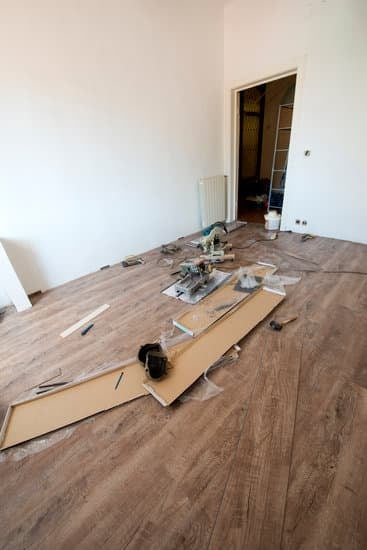Are home improvement projects worth it in the long run? Many homeowners grapple with this question as they consider investing time and money into enhancing their living spaces. In this article, we will delve into the various aspects of home improvement projects to evaluate their true value and impact. From increasing property value and curb appeal to analyzing cost versus return on investment, we will explore the factors that contribute to the worthiness of these undertakings.
Home improvement projects offer a range of benefits that go beyond just aesthetics. They have the potential to significantly increase property value and enhance curb appeal, making them a worthwhile investment for many homeowners. However, it’s crucial to weigh the costs against the value gained to make informed decisions about which projects are worth pursuing.
Beyond the financial aspect, regular maintenance and repairs play a significant role in long-term savings by preventing more extensive and costly issues down the line. We’ll also examine how different approaches, such as DIY projects versus hiring professionals, can impact the overall outcome and worth of home improvement endeavors. Join us as we navigate through the complexities of home improvement projects to uncover whether they are truly worth it in the grand scheme of homeownership.
Benefits of Home Improvement Projects
Undoubtedly, one of the significant benefits of home improvement projects is the increase in property value and curb appeal. Whether it’s a minor renovation or a major overhaul, making changes to your home can significantly impact its perceived value and aesthetic appeal. Here are some key benefits:
- Increased Property Value: One of the most obvious benefits of home improvement projects is the potential to increase the overall value of your property. Upgrading key areas such as kitchens, bathrooms, and outdoor spaces can attract potential buyers and command a higher selling price.
- Enhanced Curb Appeal: Exterior improvements such as landscaping, painting, and updating entryways can enhance the visual appeal of your home. A well-maintained and attractive exterior not only creates a positive first impression but also adds to the overall charm of your property.
In addition to these tangible benefits, home improvement projects can also contribute to a sense of pride and satisfaction in homeownership. Knowing that your property is well-maintained and aesthetically pleasing can lead to a greater sense of contentment and emotional attachment.
Ultimately, investing in home improvement projects with the aim of increasing property value and curb appeal can be a worthwhile endeavor. However, it’s essential to carefully consider the cost versus the potential return on investment for each project before diving in. By weighing these factors and making informed decisions, homeowners can maximize the benefits of their home improvement efforts.
Cost vs Value
When it comes to home improvement projects, one of the key considerations for homeowners is the return on investment (ROI) that they can expect. Not all projects are created equal in terms of adding value to a property, and it’s important to carefully analyze the cost versus the potential return.
According to Remodeling Magazine’s 2021 Cost vs. Value report, certain types of projects consistently show a higher ROI than others. For example, garage door replacements, manufactured stone veneer installations, and minor kitchen renovations are among the projects with the highest ROI.
Another factor to consider when analyzing the return on investment for different types of home improvement projects is the location of the property. Regional preferences and market trends play a significant role in determining which projects offer the best returns. For instance, in regions where outdoor living spaces are highly sought after, adding a deck or patio could yield better returns compared to other areas where such features may not be as desirable.
Moreover, homeowners should also take into account the duration they plan to stay in their homes when evaluating ROI for home improvement projects. While some renovation projects may offer a high ROI in terms of increasing property value, they may not necessarily provide immediate financial benefits if you’re planning to sell your home within a short period after completing them.
It’s essential to weigh both short-term and long-term gains when assessing whether a particular home improvement project is worth the investment.
| Project Type | Return on Investment (ROI) |
|---|---|
| Garage door replacement | 94% |
| Manufactured stone veneer installation | 92% |
| Minor kitchen renovation | 72% |
Importance of Regular Maintenance and Repairs for Long-Term Savings
Regular maintenance and repairs are crucial for the long-term savings of a homeowner. By staying on top of maintenance tasks and addressing repairs promptly, homeowners can avoid costly damage and extend the longevity of their property. Regular maintenance includes tasks such as checking for leaks, inspecting the roof, and servicing HVAC systems, while repairs may involve fixing plumbing issues, replacing worn-out materials, or repairing structural damage.
One of the key benefits of regular maintenance and timely repairs is the prevention of more significant and expensive problems down the line. For example, a small leak in the roof that goes unnoticed or unaddressed can lead to water damage, mold growth, and compromise the structural integrity of the home. By regularly inspecting and maintaining the roof, homeowners can mitigate these risks and avoid costly repairs in the future.
Additionally, regular maintenance and repairs contribute to energy efficiency, which translates to cost savings for homeowners. Insulating walls and attics, sealing air leaks around doors and windows, and maintaining efficient HVAC systems all play a role in reducing energy consumption and utility costs. Over time, these savings can add up significantly, making regular maintenance an investment in long-term financial well-being.
DIY vs Hiring Professionals
When it comes to home improvement projects, one of the key decisions homeowners have to make is whether to tackle the project themselves or hire professionals. Both approaches have their own pros and cons, and it ultimately depends on the specific project, the homeowner’s skill level, budget, and time constraints.
DIY (Do It Yourself)
Taking on a home improvement project yourself can be a great way to save money on labor costs. Many DIY enthusiasts also find joy and satisfaction in completing a project with their own hands. Additionally, learning new skills and gaining experience can be valuable for future projects. However, it’s important to consider the potential risks of DIY projects, such as lack of expertise leading to costly mistakes and safety hazards.
Hiring Professionals
Hiring professionals for home improvement projects ensures that the job is done efficiently, correctly, and up to code. Experienced contractors or tradespeople can offer insight and recommendations based on their expertise. Furthermore, hiring professionals may save time and reduce stress for homeowners who are not well-versed in certain types of work. On the downside, professional services often come with a higher price tag, which may not always fit into a homeowner’s budget.
Ultimately, when deciding between DIY or hiring professionals for home improvement projects, homeowners should carefully consider their own capabilities, available time, budget constraints, and the complexity of the project at hand. While some tasks may be suitable for a DIY approach, others may require professional intervention for optimal results.
Environmental Impact
Energy Efficiency Upgrades
One of the key ways in which home improvement projects can contribute to sustainability is through energy efficiency upgrades. This can include replacing old windows and doors with more energy-efficient options, adding insulation to walls and attics, or upgrading heating, ventilation, and air conditioning (HVAC) systems. These improvements not only reduce energy consumption and utility bills but also minimize the carbon footprint of the household.
Water Conservation Initiatives
Another aspect of home improvement projects that can contribute to sustainability is the implementation of water conservation initiatives. This includes installing low-flow fixtures in bathrooms and kitchens, repairing leaks, and investing in water-saving appliances. By reducing water usage, homeowners not only save money on their utility bills but also help conserve this precious resource for future generations.
Use of Sustainable Materials
When undertaking renovations or remodeling projects, homeowners can opt to use sustainable materials such as bamboo flooring, reclaimed wood, recycled glass countertops, or low-VOC paints. By choosing eco-friendly materials, individuals can lessen their environmental impact and promote a more sustainable approach to home improvement.
Incorporating these environmentally friendly practices into home improvement projects not only benefits the planet but also enhances the overall value of the property while creating a healthier living environment for its occupants.
Emotional and Mental Well-Being
A well-maintained home not only looks good from the outside, but it can also have a positive impact on the mental and emotional well-being of its inhabitants. Studies have shown that living in a clean and organized environment can reduce stress, anxiety, and feelings of overwhelm.
A cluttered or disorganized home can have the opposite effect, leading to increased levels of cortisol, the stress hormone. Therefore, investing time and effort into home improvement projects can contribute to creating a peaceful and relaxing living space.
Furthermore, the act of completing home improvement projects can also bring about a sense of accomplishment and satisfaction. Whether it’s fixing a leaky faucet, painting a room, or renovating a kitchen, these tasks provide tangible results that can boost self-esteem and overall happiness. Taking pride in one’s living space has been linked to increased feelings of contentment and fulfillment.
In addition to personal well-being, a well-maintained home can also have positive effects on relationships within the household. When the environment is clean and organized, family members are more likely to feel comfortable and at ease. This can lead to improved communication, better moods, and an overall harmonious atmosphere within the home.
| Psychological Benefits | Well-Maintained Home |
|---|---|
| Reduced stress and anxiety | ✔️ |
| Increased sense of accomplishment and satisfaction | ✔️ |
The Risks of Neglecting Home Improvement Projects
Neglecting home improvement projects can have potential long-term consequences that may outweigh the benefits of saving time and money in the short term. It is important for homeowners to consider the risks associated with neglecting regular maintenance and repairs, as it can lead to more extensive and costly problems down the line. Below are some potential long-term consequences of neglecting home improvement projects:
- Structural damage: Neglecting maintenance tasks such as fixing a leaky roof or repairing cracks in the foundation can lead to serious structural damage over time. This can compromise the safety and integrity of the entire home.
- Decrease in property value: Failing to upkeep a home can result in a decrease in property value. Potential buyers may be less inclined to purchase a home that requires a significant amount of work, leading to lower resale value.
- Health and safety hazards: Neglecting home improvement projects can create health and safety hazards such as mold growth, electrical issues, or plumbing problems. These issues can pose risks to both physical health and overall well-being.
It is crucial for homeowners to prioritize regular maintenance and repairs in order to avoid these potential long-term consequences. By staying proactive and addressing issues as they arise, homeowners can maintain the value, safety, and livability of their homes for years to come.
Conclusion
In conclusion, home improvement projects can definitely be worth it in the long run. The benefits of increasing property value, improving curb appeal, and achieving a sustainable and well-maintained home are all important factors to consider.
While there is a cost involved in undertaking these projects, the return on investment and potential long-term savings from regular maintenance and repairs make it a worthwhile investment. It is also essential to weigh the pros and cons of DIY versus hiring professionals for these projects, as well as considering the emotional and mental well-being that comes from living in a well-kept home.
Furthermore, neglecting home improvement projects can lead to potential long-term consequences such as decreased property value, higher costs for repairs in the future, and negative impacts on the environment. By taking the time and effort to invest in our homes through improvement projects, we can contribute not only to our own well-being but also to the sustainability of our communities.
Ultimately, while home improvement projects may require an initial financial investment, the long-term benefits far outweigh the costs. From increased property value to sustainable living and peace of mind, prioritizing home improvement is a decision that can lead to a happier and more secure future.
Frequently Asked Questions
Are Home Renovations Worth the Money?
Home renovations can be worth the money if they add value to the property and improve the quality of life for the homeowners. Renovations that address any structural issues, modernize outdated features, or make the home more functional can make it more appealing to potential buyers in the future.
However, it is important for homeowners to carefully consider their budget and choose renovations that will provide a favorable return on investment.
What Is the 30 Percent Rule of Home Renovation?
The 30 percent rule of home renovation suggests that homeowners should not spend more than 30 percent of the home’s value on renovations. This guideline helps ensure that homeowners do not overcapitalize on their property and end up spending more than they could potentially recoup when selling their home.
It encourages homeowners to carefully consider the cost versus value of their renovations before proceeding.
What Are the Cons of Renovating?
The cons of renovating can include unexpected costs, disruption to daily life, and potential delays in completion. Renovations often uncover hidden issues or complications that were not initially anticipated, leading to additional expenses and time spent on the project.
Furthermore, living in a construction zone can be inconvenient and disruptive for homeowners and their families. Additionally, some renovations may not provide a favorable return on investment if they are too personalized or niche for potential buyers in the future.

I’m thrilled to have you here as a part of the Remodeling Top community. This is where my journey as an architect and remodeling enthusiast intersects with your passion for transforming houses into dream homes.





